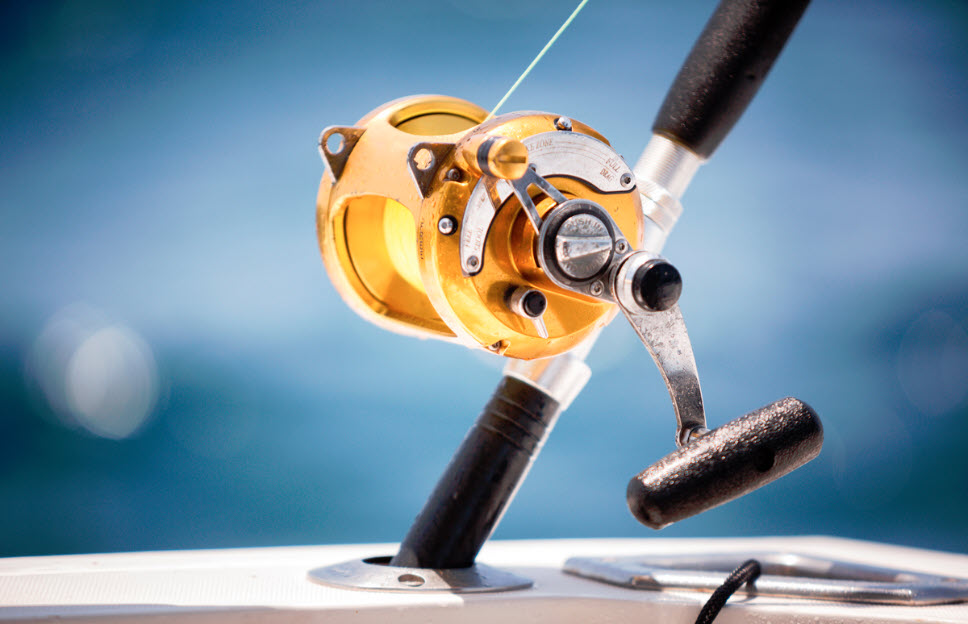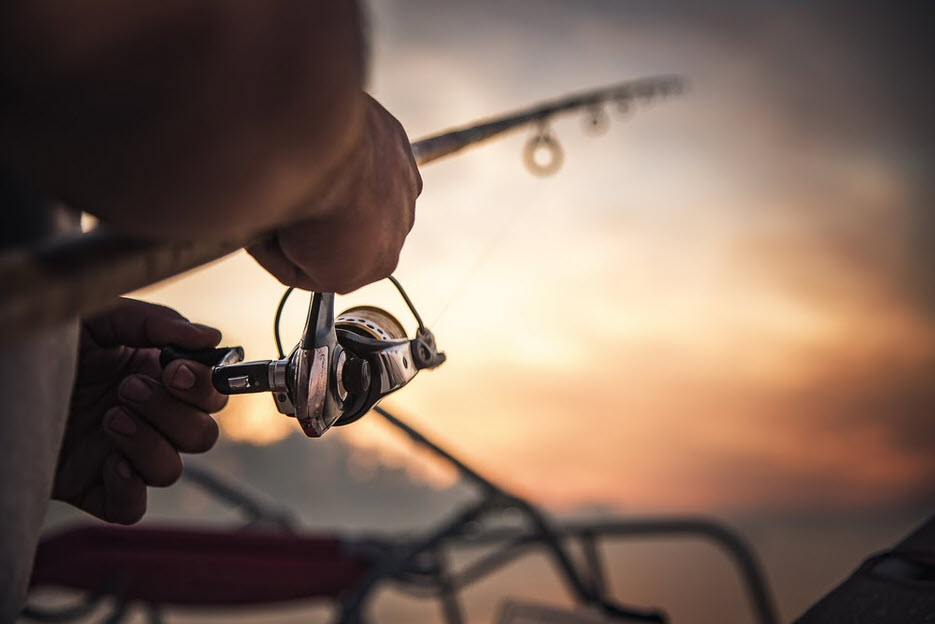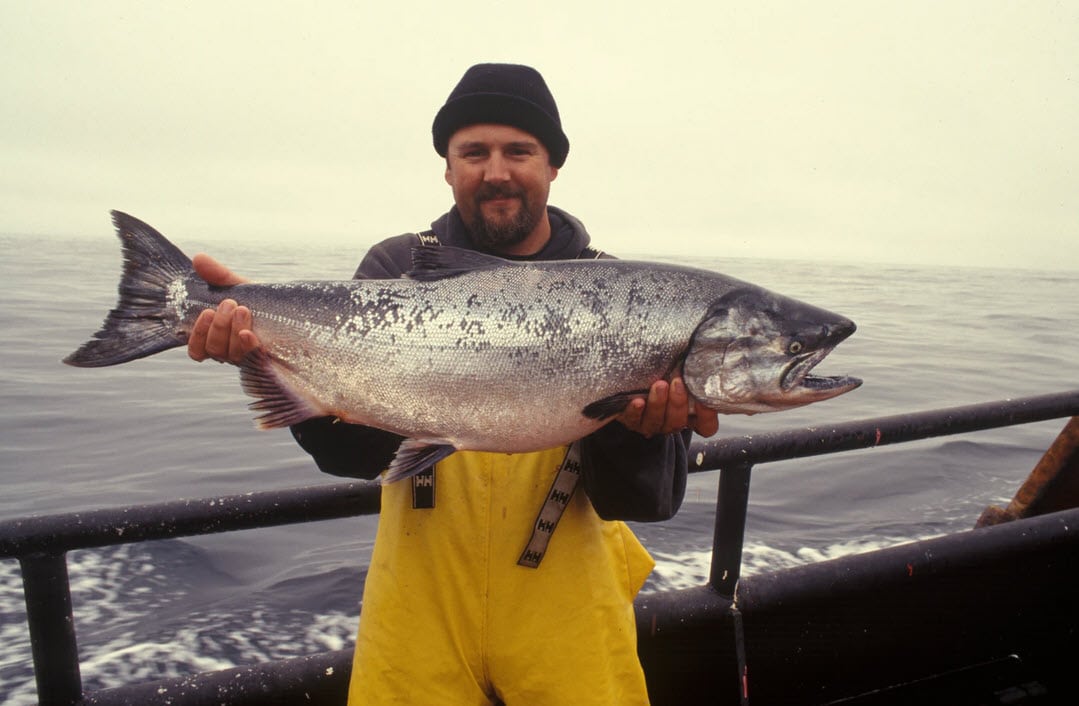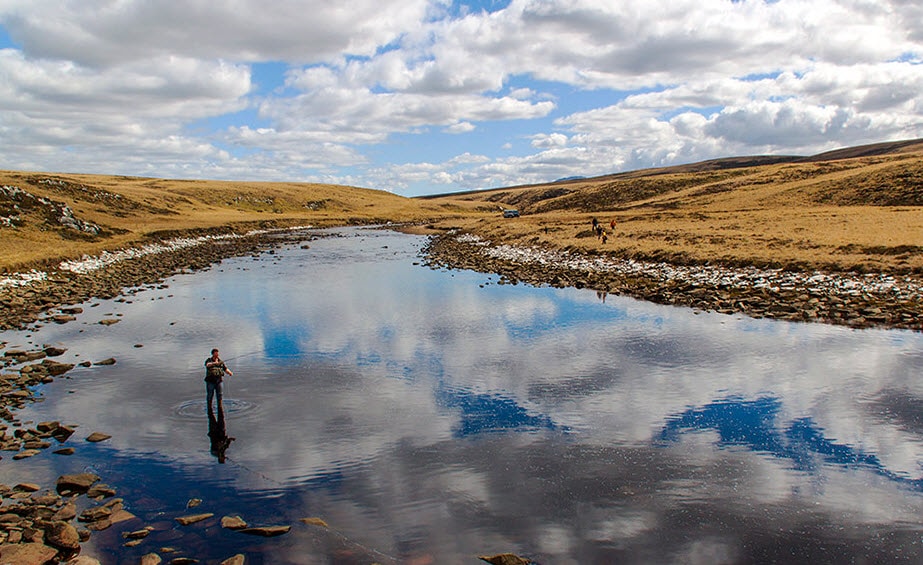
When you are leaving on a wilderness fishing trip, it’s critical that you take along the best gear. There are no fly fishing outlets or corner stores in the backcountry, so you should be ready right from the onset. Which fly rods you bring will depend upon where you are actually going as well as what types of fish you’ll be fishing for. You could consider taking along some travel rods for easy carry. However the rest of the equipment mentioned here is what you’ll need for any expedition away from the city.
Page Contents
- 15+ tips to fish small streams in the mountains
- 1. Be quiet
- 2. Keep moving
- 3. Go from downstream
- 4. Use the high-stick method
- 5. Ensure an excellent first cast
- 6. Pay attention to the bubbles
- 7. Cats behind structure in the river
- 8. Cover a long distance
- 9. Stay focused
- 10. Check out your shadow
- 11. Fish a dry-dropper rig
- 12. Don’t skip the shallows
- 13. Change the fly frequently
- 14. Sein the water
- 15. Be gentle when you set your hook
- 16. Use a small fly rod
- 17. Crimp the barbs
Wading Equipment
Although a ton of summertime trips include wet-wading, excellent waders and boots are vital, particularly during very early and also late summer months. Waders allow you to fish water that is typically inaccessible, and also wet-wading in high mountain range lakes could be cold even in the course of the warmest summer season months because of the continuous snowmelt.
When selecting waders, you should concentrate on those that are actually light-weight and also packable. Preferably, they ought to also be sturdy, as trekking along creeks and backcountry lakes is full of loads of obstacles that may easily tear a set from waders. For Wild Angling, I constantly suggest stocking-foot waders over those with built-in footwear. A stockingfoot wader with a great wading boot is actually less complicated to load, and this will certainly supply better match and also reliability for hiking on uneven landscapes.
For shoes, a lightweight, hiking type paddling footwear is ideal. Try to find one with a Vibram rubber sole for good grip. Our team don’t really suggest felt soles considering that they don’t offer great footing in hilly landscapes. Even more important, felt soles carry a raised risk of introducing invasive species in our waters. Studded or even cleated soles are actually normally certainly not needed, and also are not recommended if you will be actually utilizing blow up rafts.
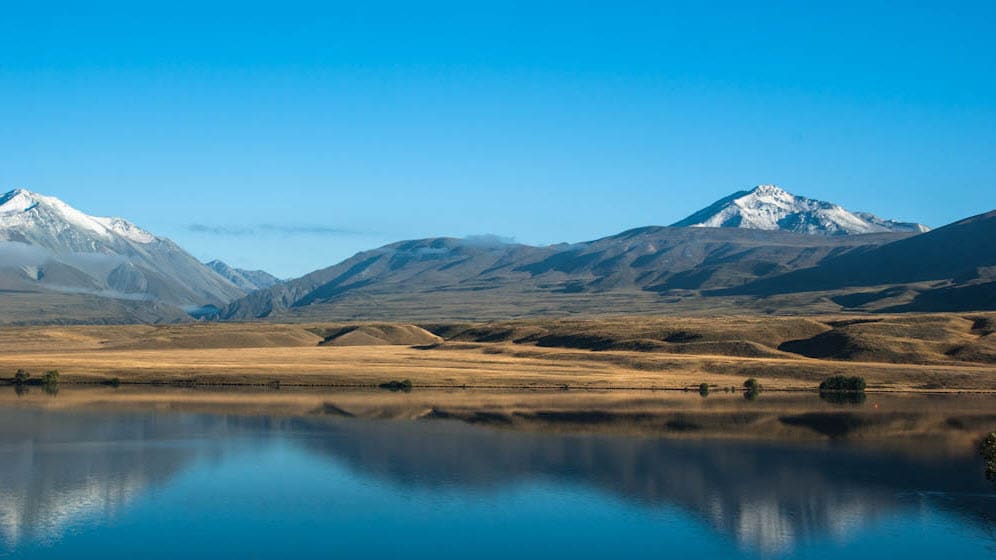
The icy water in mountain range ponds can help make wet-wading difficult, so pack better waders.
For wet wading, you will prefer a set of quick-drying trousers and also wet-wading sandals, shoes, or even boots. You could put on wet wading socks, or you can easily use a pair of neoprene socks with your normal wading shoes or boots.
Sunglasses
High quality, polarized sunglasses are also vital for fly fishing. They supply eye protection off higher elevation sun, tree arm or legs, brush, and also flying hooks, as well as they allow you to see fish easier in the water. Plastic sunglass lenses are actually the way to go, for safety reasons. Brownish lenses are thought about a really good well-round color for a large array of fly fishing situations. Buy the best sunglasses you can purchase within your budget. You will not regret it.
Fishing Backpack
A fishing backpack can easily be another frustrating piece of equipment because there are numerous types and also brands on the marketplace. Whether you fish with a conventional knapsack, a sling pack, midsection pack, trunk pack, flyfishing vest, or even some combination of these, it’s all individual preference. Essentially, you are going to want to use the one backpack that enables you to keep your tackle and flies well organized, and the rest of your equipment.
On a backcountry excursion, you will need adequate area for extra clothing, storm equipment, food as well as water. For one day trips into the wild, 1,800-2,000 cubic inches of room will suffice. Nonetheless, this does not include room for waders and wading shoes. Otherwise, you are going to require a pack in the range of 3,000 cubic inch.
Clothing
Just like any trip into the wild, make sure you bring good enough clothes for a wide array of temperatures. In the morning, that can be 40-50 degrees when our team leave camp. Through midday, temps may rise into the 70s and even low 80s. In the course of the early and late season, this can even be in the 30s in the morning. Lightweight layers are great, to make sure that you can easily readjust as needed.
Merino wool, fleece, and Primaloft are all fantastic options for cooler weather. Pack a rain jacket with these, and you will be warm in windy or even moist elements. Lightweight, extremely breathable, polyester layers are wonderful for warmer temperatures as well as defend you from the sun and also infections. With the sun and bugs in mind, a few various other items to take throughout are actually a hat, sun screen lotion, as well as bug spray! Typically, bugs are actually only a complication early in the summer months, but attacking flies can pick up as soon as the mosquitoes are gone. Normally by August, bugs are actually no true issue, however it is actually better to have some spray on you just in case you require that.
Rain Gear
The last item we wish to mention in this short article is a piece of quality rain gear. This is a must for backcountry flyfishing, and also you need to never ever leave the camping ground without that! It’s not uncommon to leave camp in the early morning with crystal clear, blue skies, and by mid-day to be taken by surprise by hefty thunderstorms. These storms can include downpours, hail, and even snow at the higher altitudes. For rain equipment, I advise bringing both a jacket as well as pants. Storm gear needs to be lightweight, breathable, and packable. If you have some really good rain gear for hunting, this is going to do a great job.
15+ tips to fish small streams in the mountains
Whether you gosh cascading mountain stream or a slow creek, there are many fly fishing possibilities in the mountains. Now that you have the proper gear for your fishing in the mountains, it wouldn’t hurt to follow some tips to catch as much fish as possible.

1. Be quiet
If you plan to catch fish in a small stream, make sure you are as silent as a mouse. Turn down the volume of your voice and tiptoe when approaching the river. Make sure to wade carefully through the water.
2. Keep moving
You need to learn when fishing small streams in the mountains not to linger in one spot for too much time. When you fish a large river, you may cast to the same spot several times; fishing in small creeks is different. You will be able to catch 2 or 3 fish from just one little run if you’re lucky enough.
3. Go from downstream
If this is the first time you go fly fishing, keep in mind that fish face upstream. You don’t want to spook them, so approach the run or hole from the downstream as quietly as you can.
4. Use the high-stick method
The high-stick method is relatively easy to use. You need to limit the amount of line in the cast, stand close to the pocket of water you fish and keep the tip throughout the drift. With high-sticking, you need to keep the drift short, the fly line off the water, and get in as many casts as you can. This method lowers the risk of disturbing feeding fish with the slap of a sloppy cast, which explains its efficiency.
5. Ensure an excellent first cast
If you fish a small stream/creek, ensure you have an excellent first cast. It might be the only possibility to catch a fish before it gets your tricks and shuns you. When you gently land the first cast in every hole, the chances for you to hook a fish are high.
6. Pay attention to the bubbles
When you walk up the bank of a small stream, you will notice bubbles floating or foaming behind a boulder; keep in mind to throw some casts as well. Fish tend to gather in well-oxygenated water and when you cast into bubbles, you actually cast into a small group of fish. However, fish will be competitive and hyper, so be fast on the hook-set.
7. Cats behind structure in the river
Fish protect themselves from predators by hiding behind structures; they also do it to avoid fighting the current. If you notice a structure in the middle of the stream, try to catch some fish.
8. Cover a long distance
When fishing small creeks and streams, you will be able to fish in solitude. The further you hike or drive, the more alone you will be. Many anglers don’t have the patience to walk past a lovely stretch of river. Go the extra 30 minutes to fish in private and cast to fish with less pressure.
9. Stay focused
On small mountain streams, everything happens quickly. The drift is quick, the cast is quick, and fish decide in a blink of an eye. You cannot afford to look away as your fish will most likely hit the fly and you miss the take.
Don’t fish long drifts when fishing small creeks. Try to keep the drifts short than the usual because long drifts increase the risk of tangles and snags, which can ruin your fishing day.
10. Check out your shadow
Many factors weigh in with fly fishing and the angle of your shadow is one. The smaller the stream, the more critical it is to maintain the shadow of the water you fish. Sometimes, you will need to cross the river before making a hole. If not possible, you will have to bend and make your shadow as small as you can. Fish see moving shadows as a threat and will swim to safe areas. Always pay attention to the size of your shadow.
11. Fish a dry-dropper rig
When you fish small creeks or streams, fish a dry-dropper. The water is typically shallow, so a dropper will ensure an excellent depth to get down to a feeding fish. Additionally, many trout will go for a big dry fly. You will have a great chance to fish when you fish a dry-dropper rig.
12. Don’t skip the shallows
Fish in small streams are a tad smaller than fish in big streams. Since the fish is small, it will swim in shallow water. Therefore, check out the surface water because you might find a slew of hungry fish.
13. Change the fly frequently
Fish will be a tad fussy in small streams, and you have to stay committed to one fly so that you don’t lose fish. Make sure to change the rig often and test new flies—you will no longer come home empty-handed.
14. Sein the water
Dip the water sein in the water for a few seconds, pull it up, and check out what’s floating down the river.
15. Be gentle when you set your hook
If you slam a take on a small stream trout, the fish will hurtle through the air. When fishing small streams in the mountains, make sure that your hook isn’t more than a flick of the wrist.
16. Use a small fly rod
Fly rods come in various sizes. If you plan to fish an eight-weight (made to catch steelhead) on a small river, you will rip the face off the fish. Throw away the rebar and use a three or 4-weight rod when fishing small streams in the mountains.
17. Crimp the barbs
Small fish in the mountains are excellent because they like to show off and hit flies that are way too big for them. When you don’t crimp the barbs, the chances for you to kill the fish are high. Additionally, you will spend a lot of time getting the fly out of their mouth. Some fish will drop you off, and you don’t want to struggle to tear the fly and the mouth of a baby fish.




